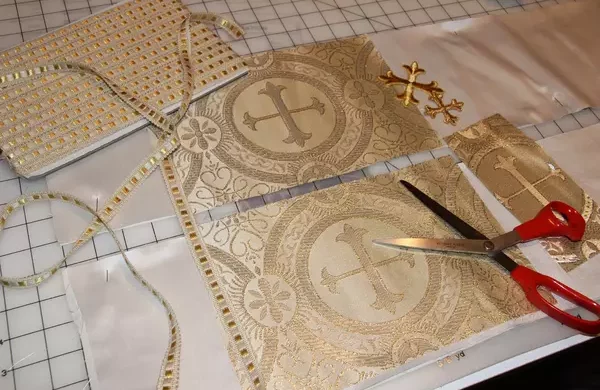
Priest or Pastoral Stoles: Trim Options
The white base fabric and fabric for orphrey trims. Finishing trim: galloon trim, braid, fringe, tassels and other trims suitable for Church vestments
Sewing enthusiasts, both beginners and experienced seamstresses, sewing tips and techniques are necessary to learn to create beautiful and long-lasting pieces. Choosing the right fabric is a key part of sewing that can influence the outcome of any project. Therefore, sewers must consider durability, weight, texture, and color when selecting fabrics. Furthermore, accurately interpreting sewing patterns is also essential to ensure proper sizing and fit.
Anyone in the sewing industry should acquire sewing techniques. Another thing to consider when sewing is to learn sewing tips and techniques. Also in measuring and cutting, pressing, and finishing seams to take their sewing skills to the next level. Basic stitches such as the straight stitch, zigzag stitch, and buttonhole stitch are also essential to learn.
In addition, having the right tools and equipment is very important for learning sewing techniques. A good sewing machine, quality scissors, a variety of needles, and thread are necessary for achieving the best results. Staying organized and keeping a clean workspace can be very helpful to the sewing process and make it more enjoyable.
Explore the possibility of Ecclesiastical Sewing if you enjoy sewing and are seeking a way to use your abilities to make lovely and meaningful liturgical projects. Making altar hangings, paraments, altar cloths, liturgical vestments, and other items for use in churches and other religious organizations. With dedication and a passion for sewing, you can able to create stunning pieces that not only showcase your skills but also add beauty and meaning to religious services.
Thus, sewing is really an enjoyable and fulfilling activity that can result in beautiful and durable objects. To create something special, it’s important to choose the right fabric, learn how to sew, have the necessary tools, and maintain order. By learning these aspects, anyone can create amazing and unique pieces that reflect their creativity and skill.

The white base fabric and fabric for orphrey trims. Finishing trim: galloon trim, braid, fringe, tassels and other trims suitable for Church vestments
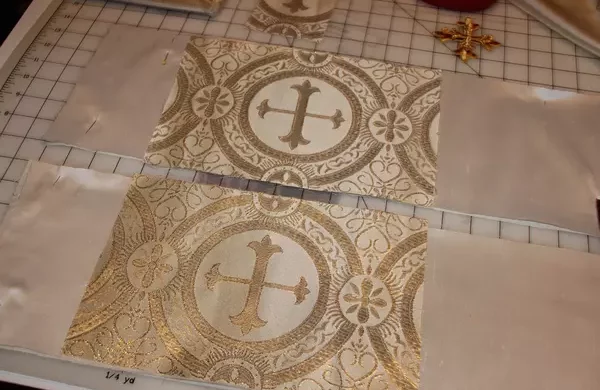
Making Priest or Pastor Stoles involves overcoming tricky parts. With Silk Shantung fabric, the challenge is its semi-transparency. To address this, underlining with unbleached muslin is presented. Orphrey size and placement are determined using the cutting table grid, following the design rule of “threes” for visual appeal. Now comes the tricky part: the lower edge of the stole. A geometry lesson and a protractor lead to marking angles and folding techniques, simplifying the process and making stole ends more enjoyable to finish.
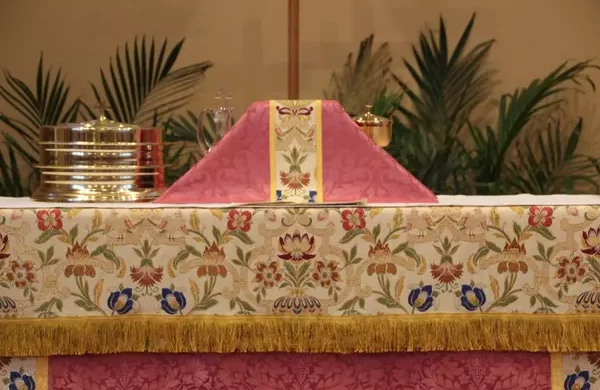
Chalice veils are very simple to construct. The beauty of the finished piece lies in excellent workmanship construction techniques and appropriate design placement. The design of a chalice veil can be as simple or elaborate as the imagination allows. Although the chalice veils do not have any trim around the edge, it is appropriate to use a cord as a decorative finish at the seam. Chalice veils often have a cross motif placed on the front edge too.
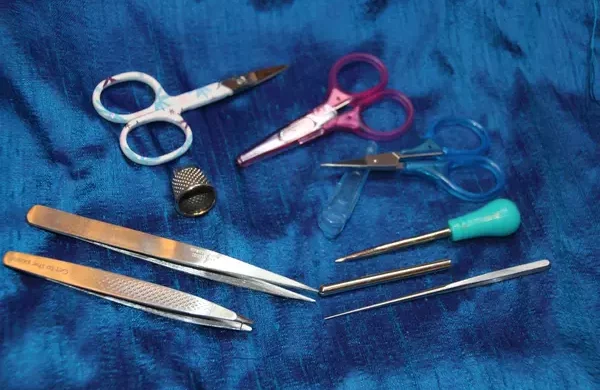
The list of tools for hand embroidery includes Embroidery Scissors, Tweezer, Tailor’s Thimble, awl, laying tool and Mellor.
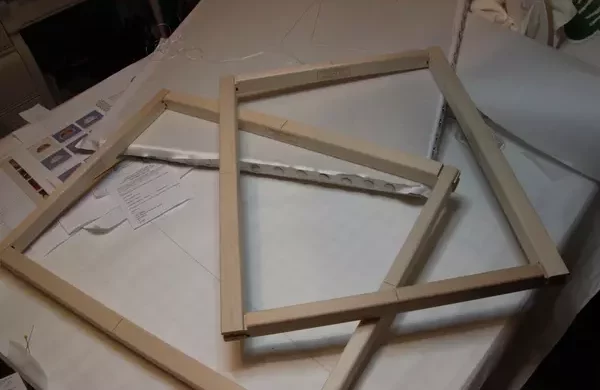
In the process of preparing for the Advent set, Evertite Stretcher Bars were selected for framing linen. Two sizes, 16″ and 23″, were chosen for the frame, ensuring its squareness before the lightweight linen was prepared. The linen, cut by thread and folded with creases for reference points, was then stretched over the frame, with alternating pinning and tacking along the width and length. Tension was adjusted for a tight finish. Despite challenges with tacks from a local store, the framed-up linen is now ready for design transfer.
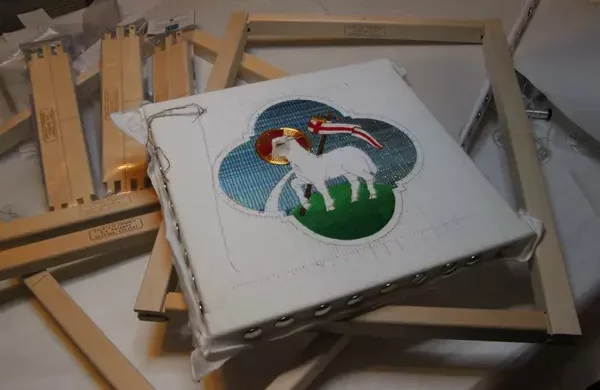
In preparation for the Advent Ecclesiastical Sewing project, the focus is on framing steps using the Evertite Tension Adjusting Stretcher Bars. These bars offer an adjustable feature with tiny screws, ensuring the embroidery project stays taunt. The bars, available in various sizes, are easily assembled with a straightforward tightening process using an Allen Wrench. The cost-effective Evertite frames are practical, functional, and adaptable, providing a range of adjustments to keep the work in good shape. Needle in a Haystack and Stitchville USA are recommended places to find Evertite frames.
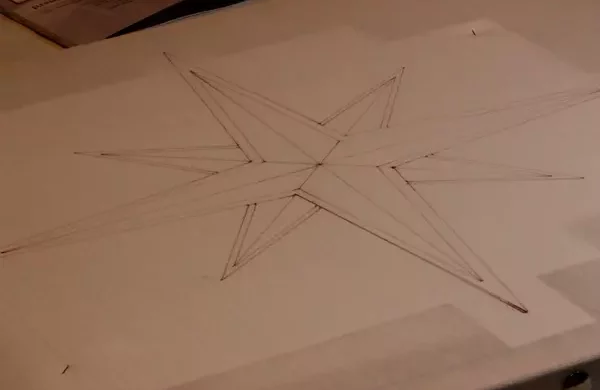
Starting a new Advent project for the church with a Star design. Quickly framed the Altar Frontal design and now onto the fun part – stitching with shiny Silver Metallic Threads. Exploring different options like Smooth Passing, Silver Twists, Check Thread, and Rococo to outline the Advent Star. The aim is to make it shimmer and shine with various textures and to create a beautiful Altar Frontal, Chalice Veil, and Pulpit Fall for Advent season.
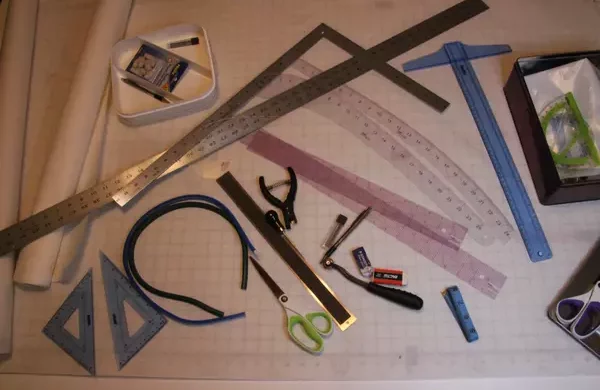
Updating pattern-making tools for Ecclesiastical Sewing projects. New additions include wide paper rolls (48″ and 24″), curved rulers, triangles, and a flexible curve for those tricky curves.
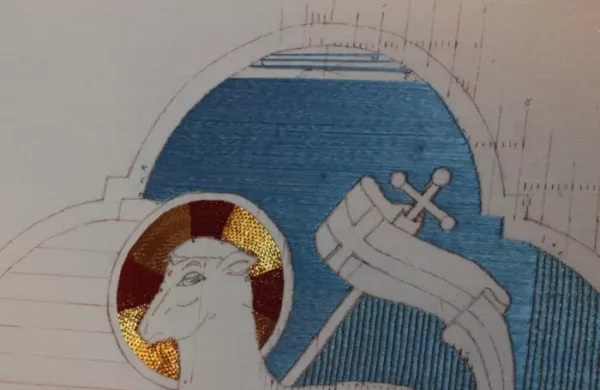
In the Agnus Dei Ecclesiastical Embroidery Project, significant progress has been made on the upper sky. Using long-laid stitches and horizontal guide marks, the detailed stitching maintains parallel and straight alignment. Frequent thread changes are necessary due to the 6 1/2″ stitch width, but the process speeds up as intricate details around the cross are left behind. The joy of completing a major portion of the sky-laid work is evident, with two-thirds now finished.
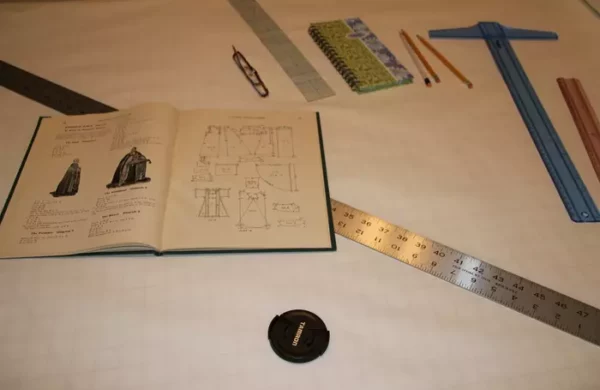
Historical monk habit pattern from an old pattern book and recreating the pattern.
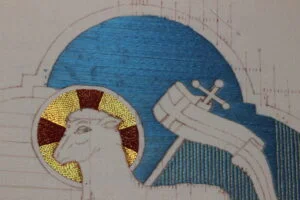
The update on the larger of the Agnus Dei pieces’ from The Tale of Two Lambs.
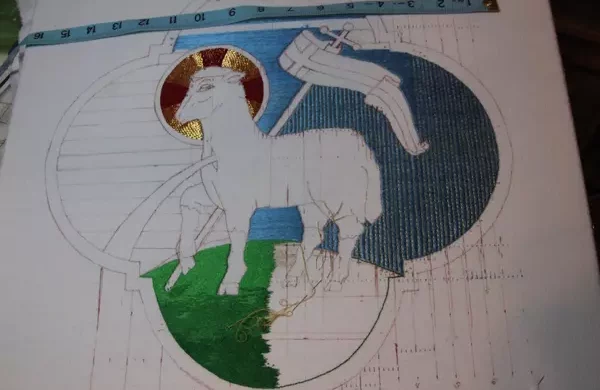
The Ecclesiastical Embroidery Design for the Altar Frontal features the largest Lamb, measuring about 15″ in width. The sky is stitched in Royal Floss, a vivid blue from the Belding Brothers Company. Goldwork details use #4 Smooth Passing with Silk Core from Access Commodities. The design aims for a bright and radiant sky, symbolizing the glorious Resurrection.
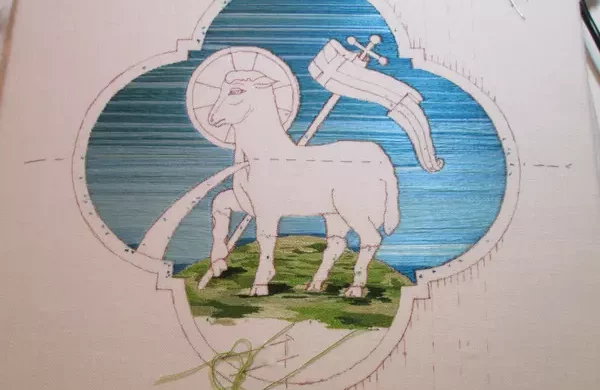
Starting with a small Agnus Dei hand embroidery design, The Tale of Two Lambs turned into two projects – in sizes small and large. Limited Ecclesiastical designs led to this traditional choice. The smaller Agnus Dei, at 8 1/2″, fits a chasuble’s back. As the project continued, minor changes improved the second design. The small lamb’s hill, initially stitched in camouflage green, became serene blue. Using Soie Ovale for the sky presented challenges, but the finished product was pleasing. Careful placement of gold passing thread helped secure the silk strands, enhancing the design.
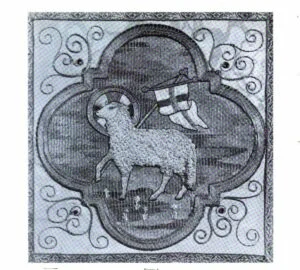
Tried a new embroidery stitch, feeling a bit scared. Sometimes, fear stops from starting. But taking a step, stitching, and learning are important. Each stitch is like a step toward getting better. It’s okay not to be perfect. The important thing is to keep trying, growing, and enjoying the journey.
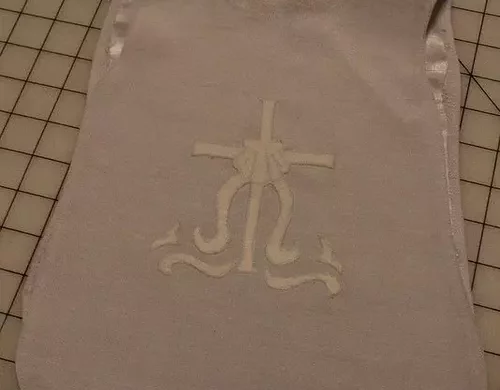
Creating a special garment for Holy Baptism—a simple, symbolic white piece to signify putting on the Holiness of Christ. This keepsake, though used briefly, holds significance as part of the Order of Holy Baptism. An easy project with a tiny neckline, a cross or shell design, and simple edges, making it a meaningful and quick creation for a memorable occasion. Perfect for families who wish to cherish the remembrance of their infant’s baptism.
You must be logged in to post a comment.